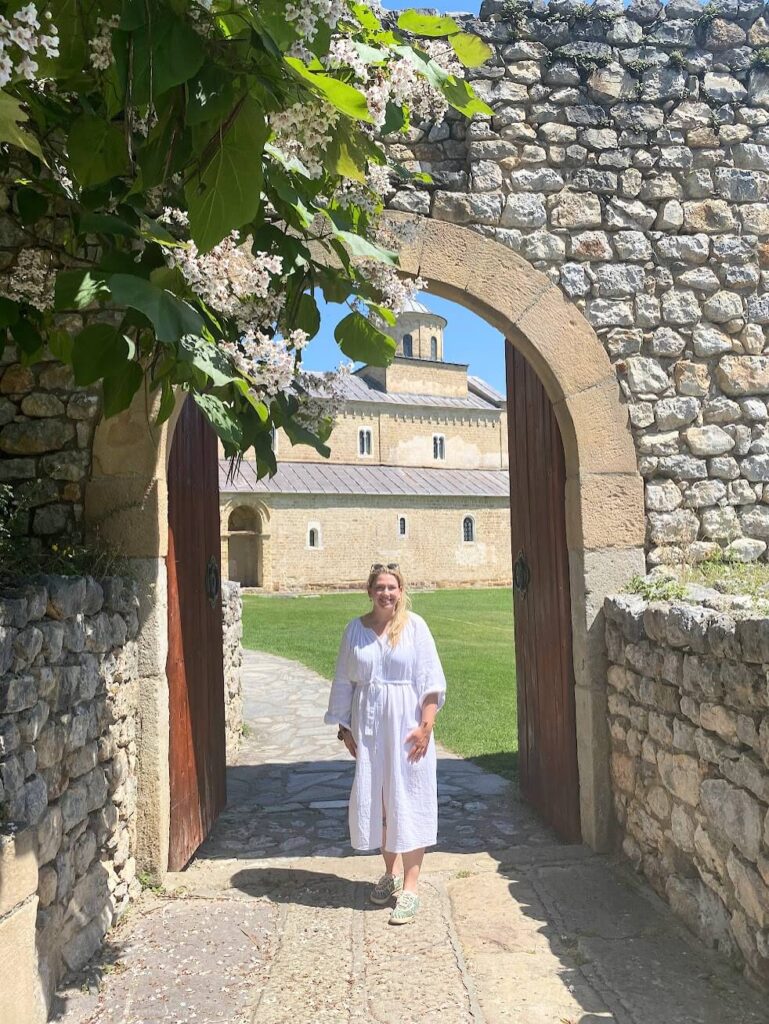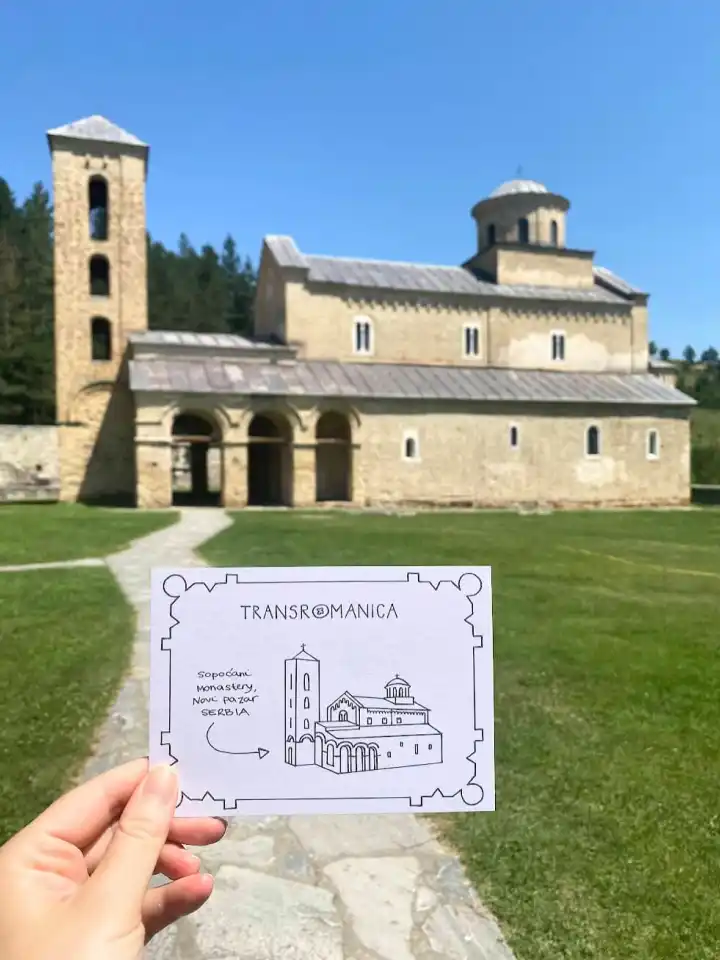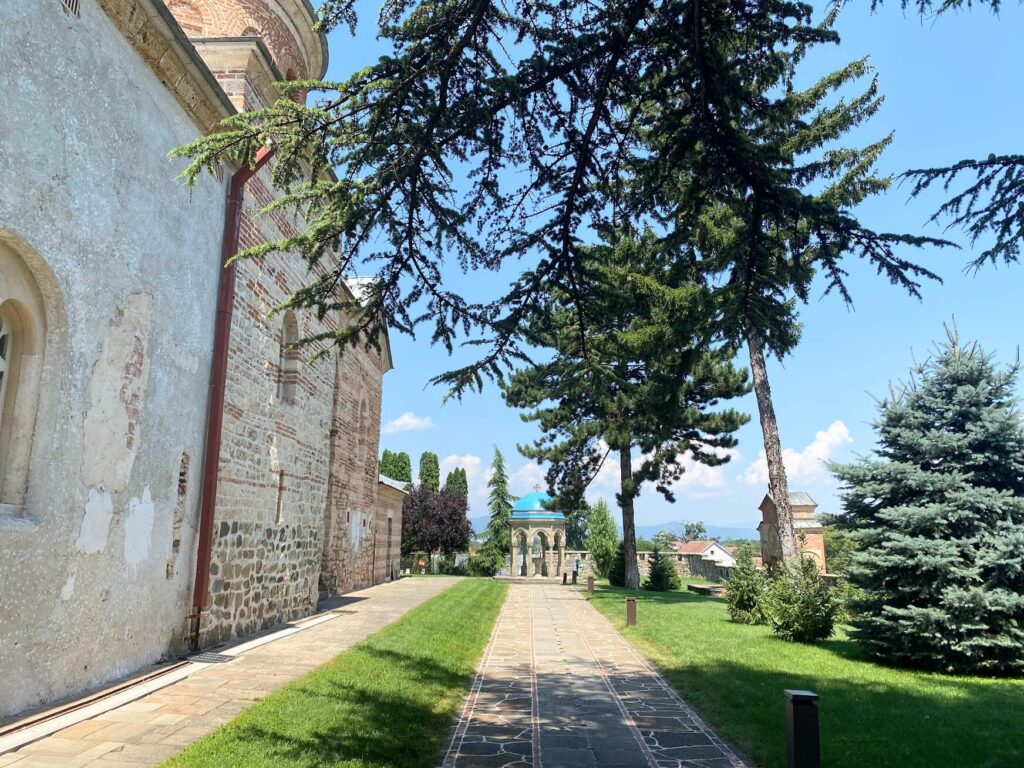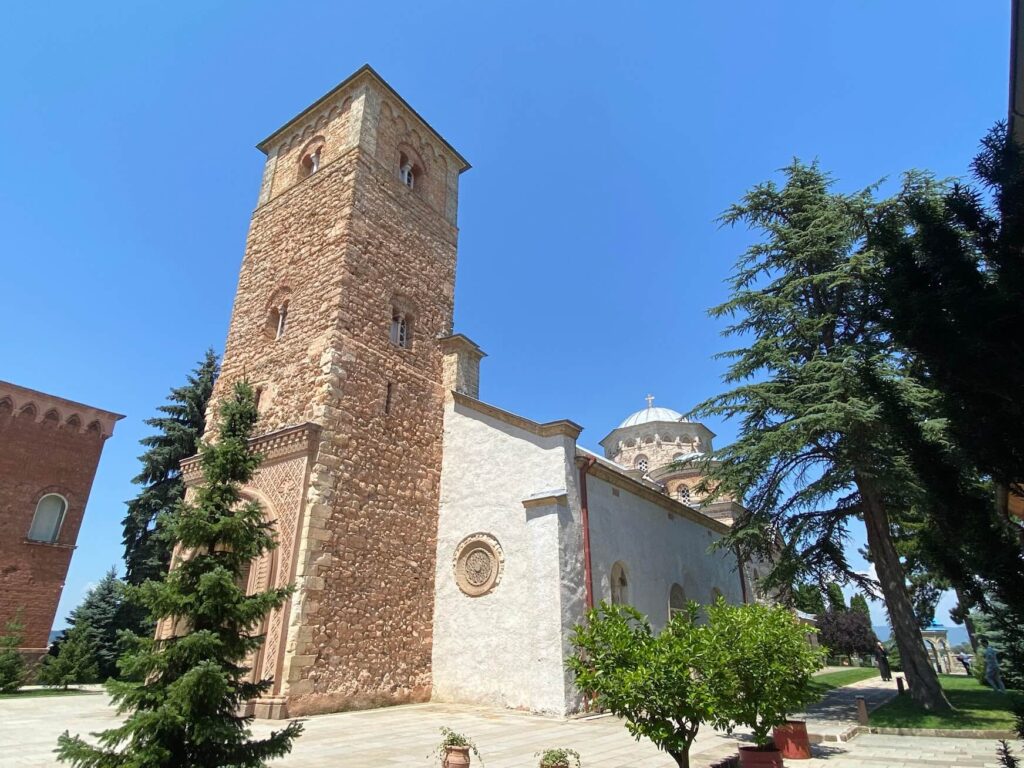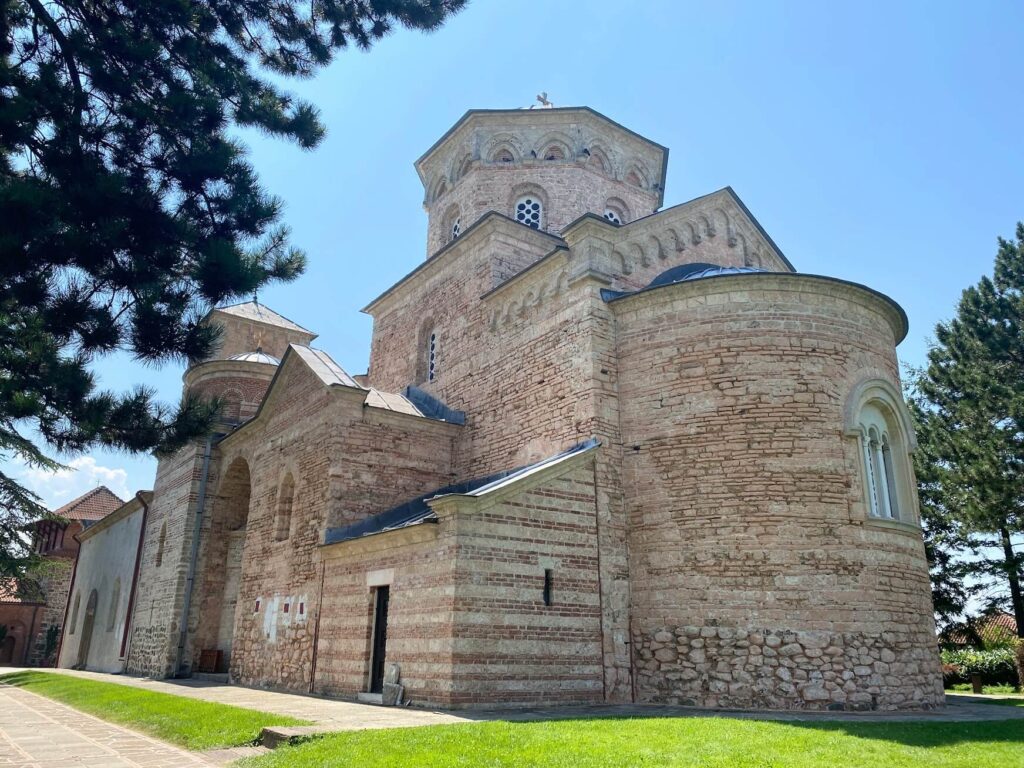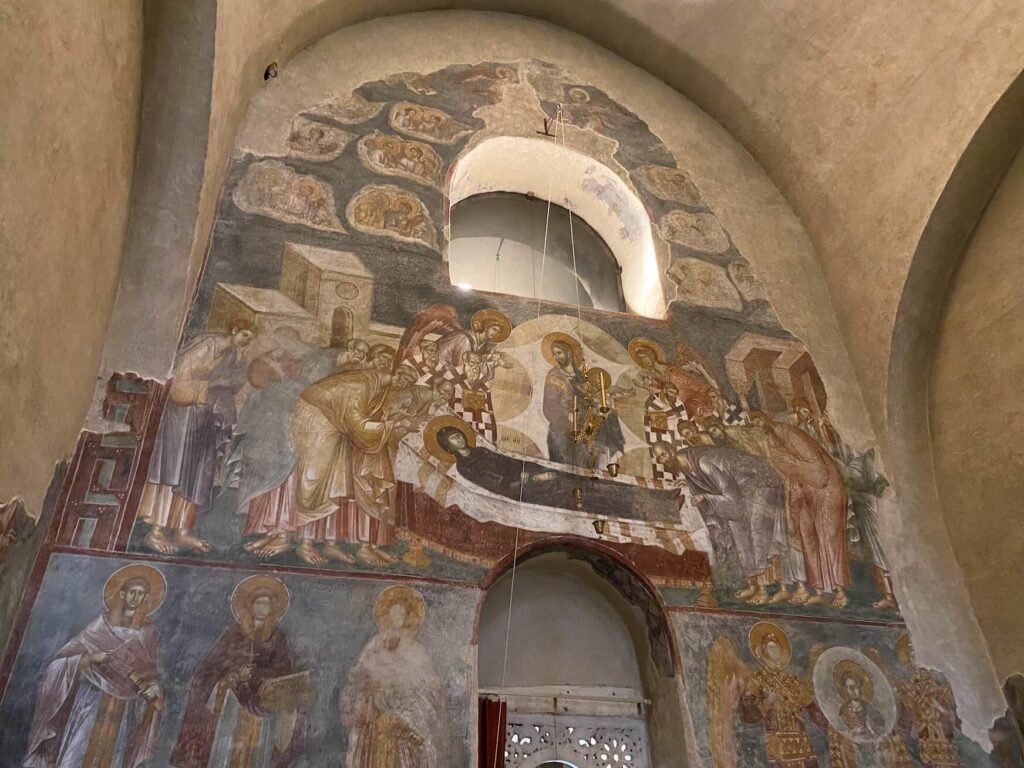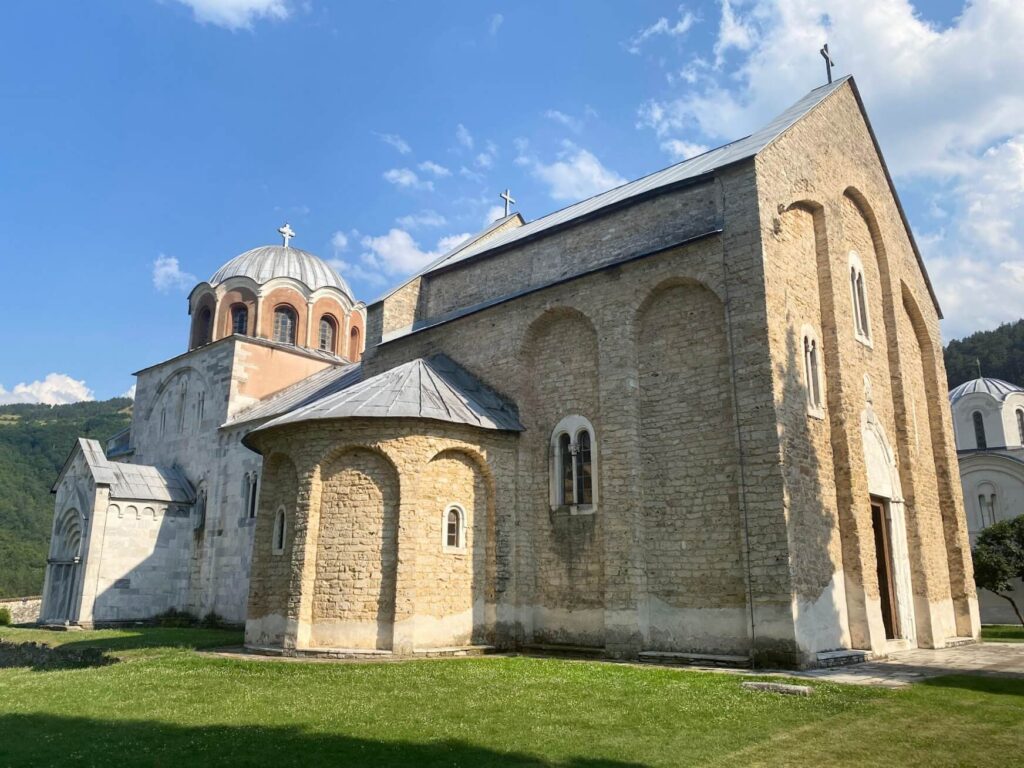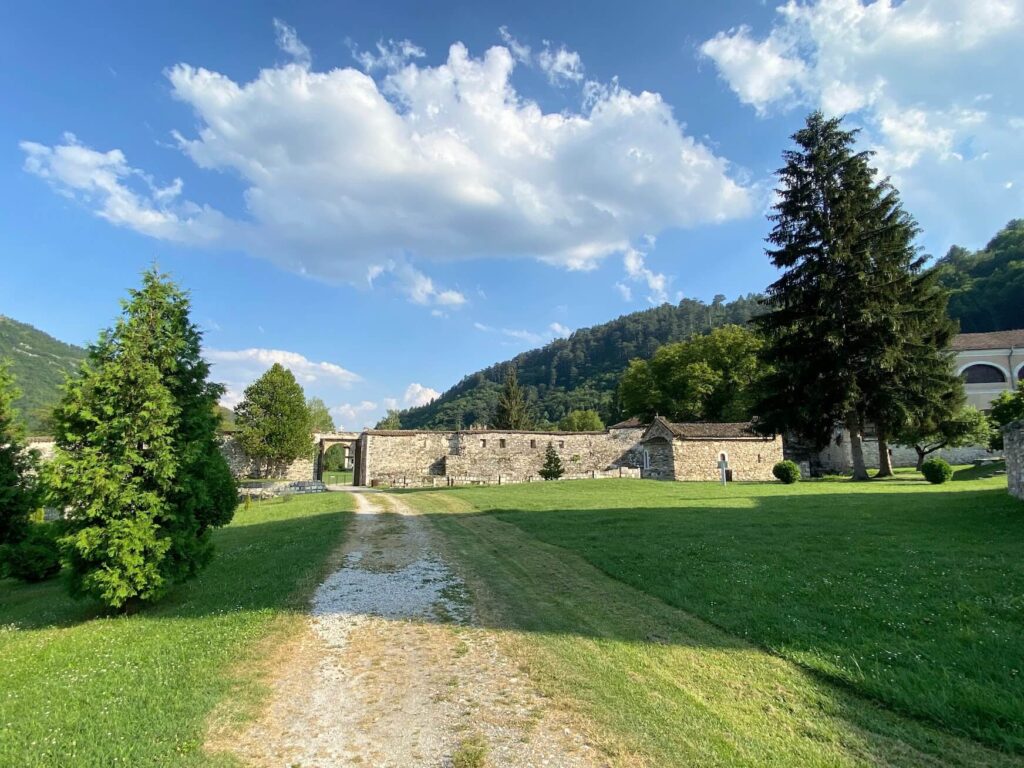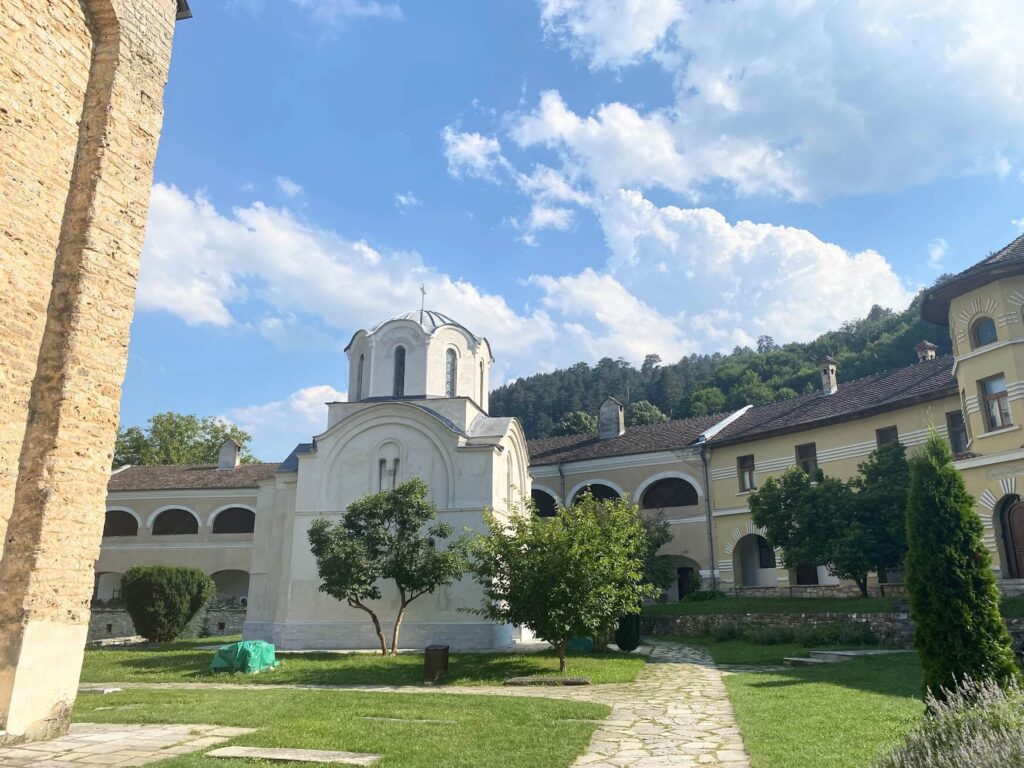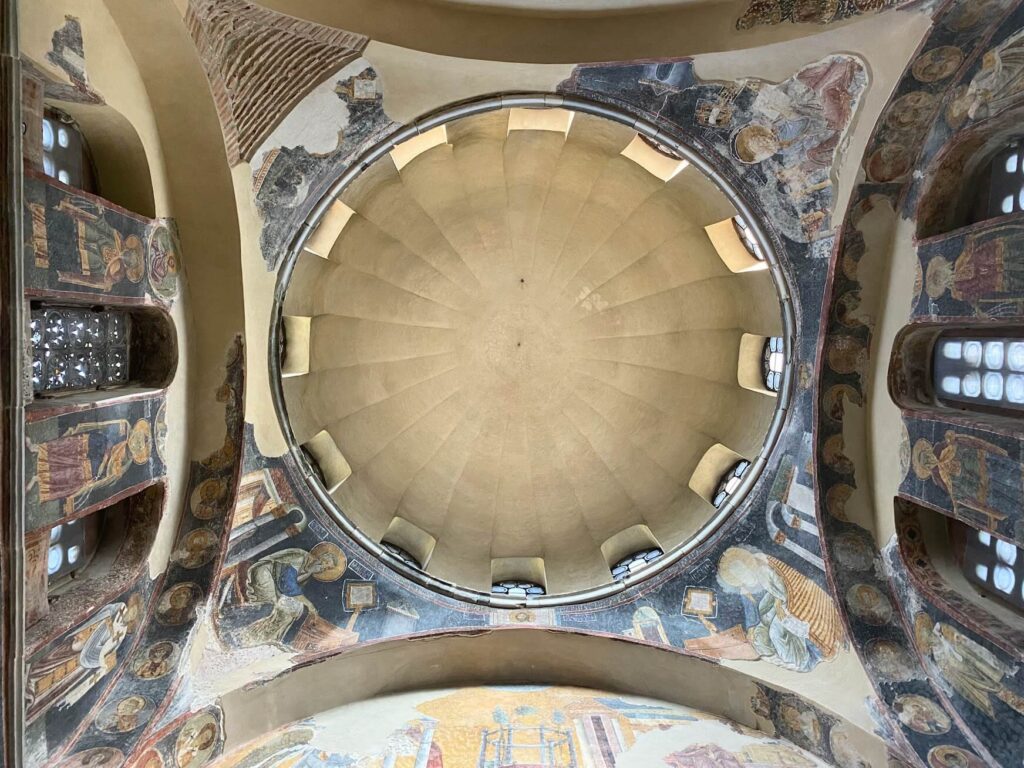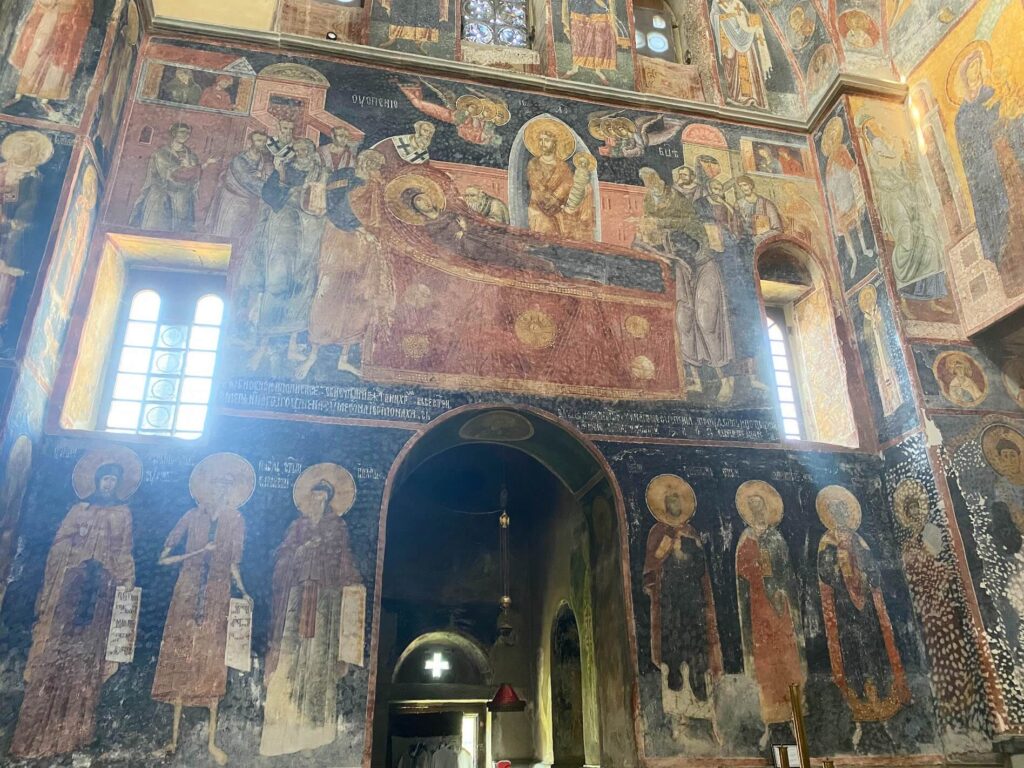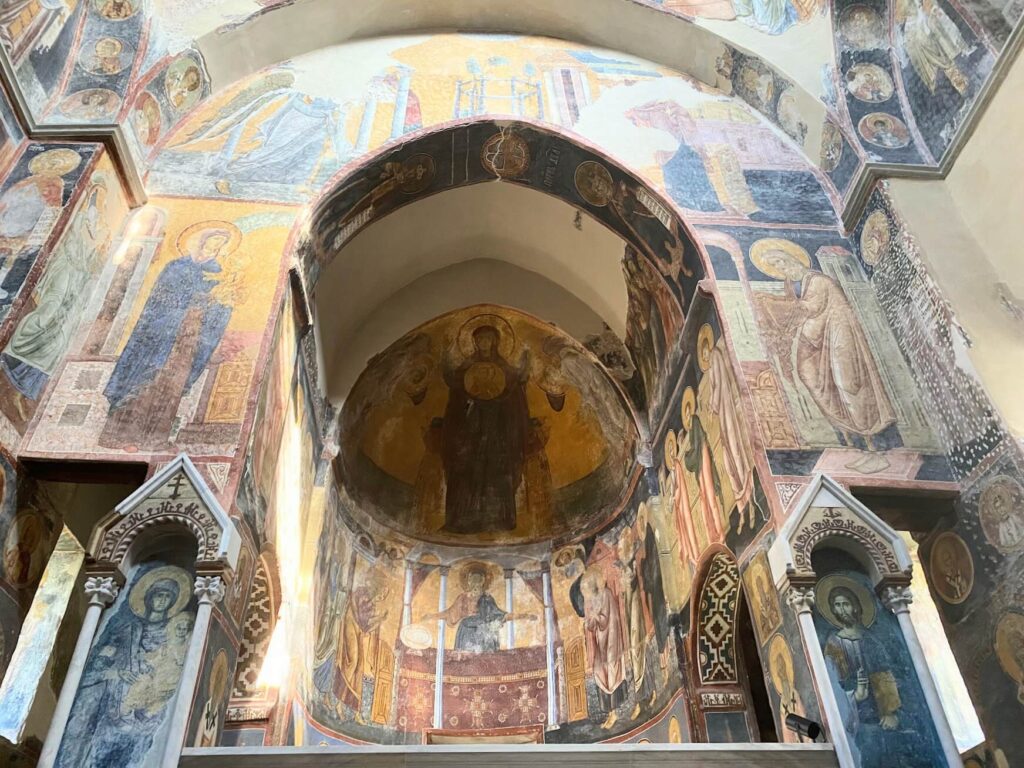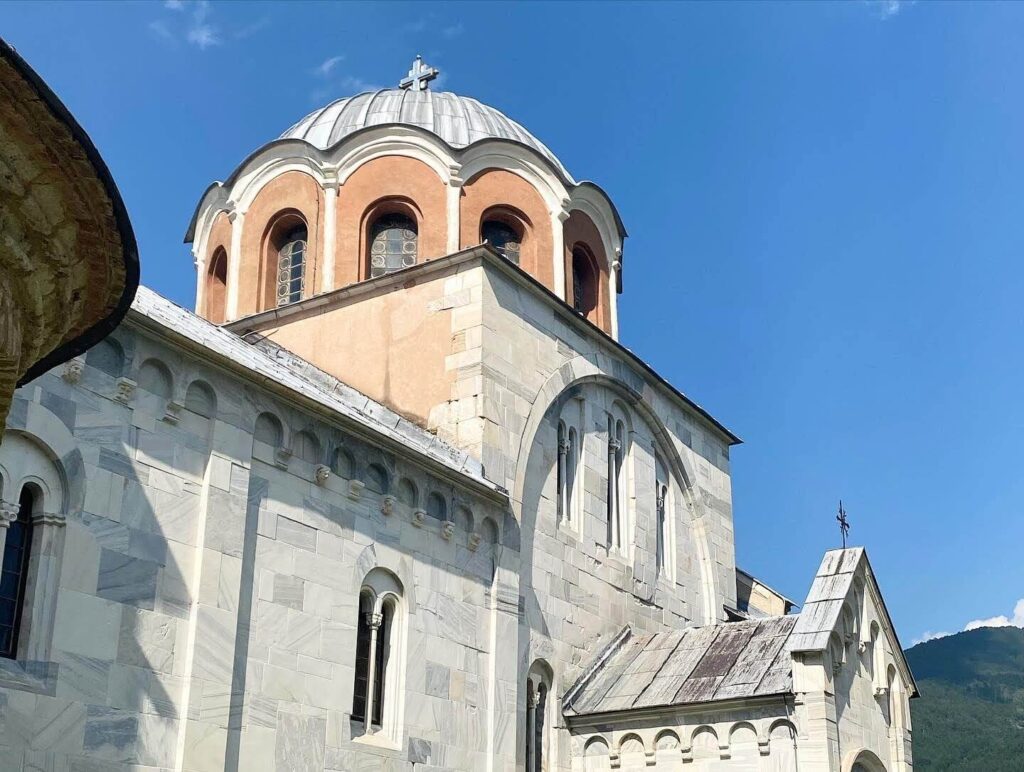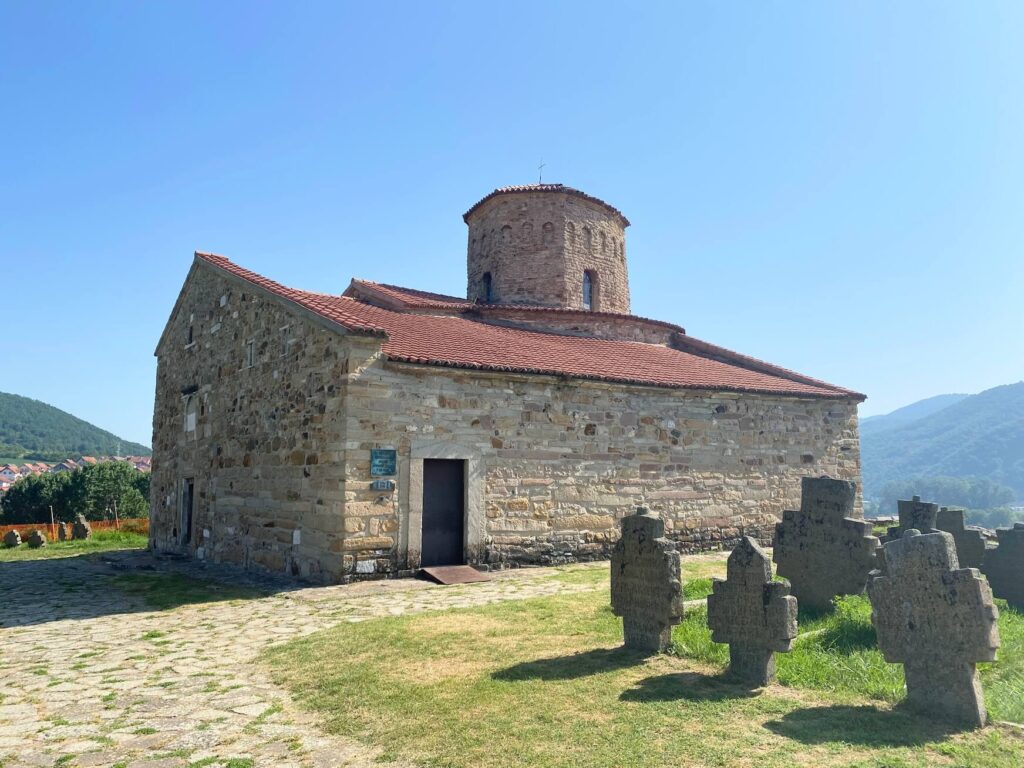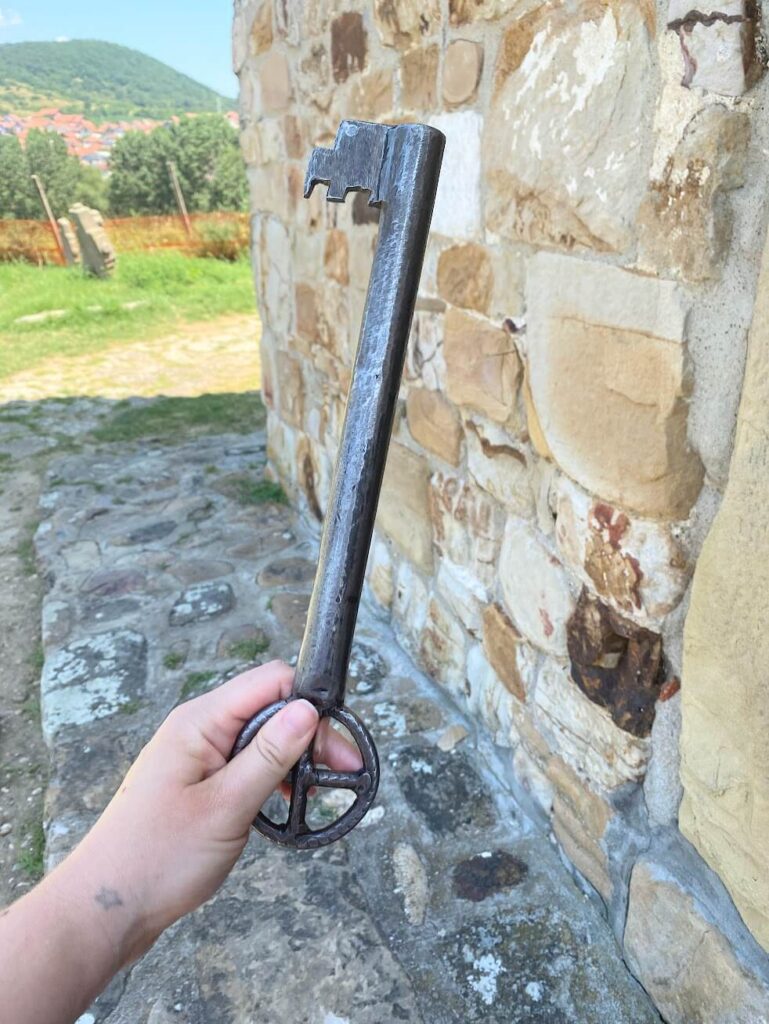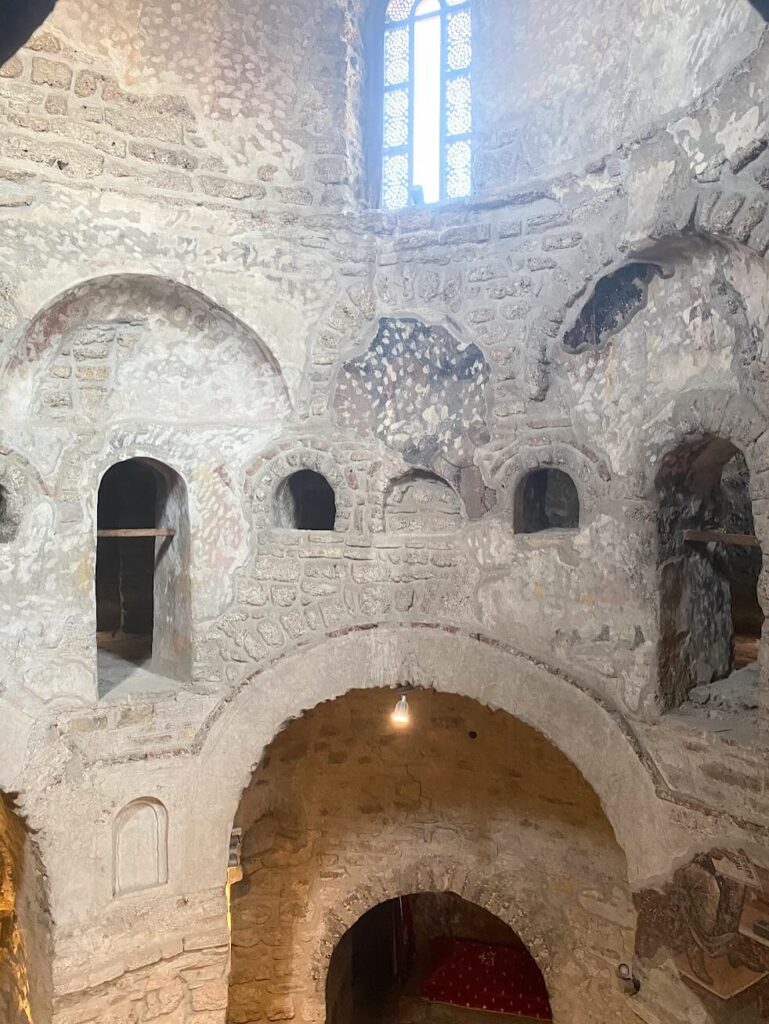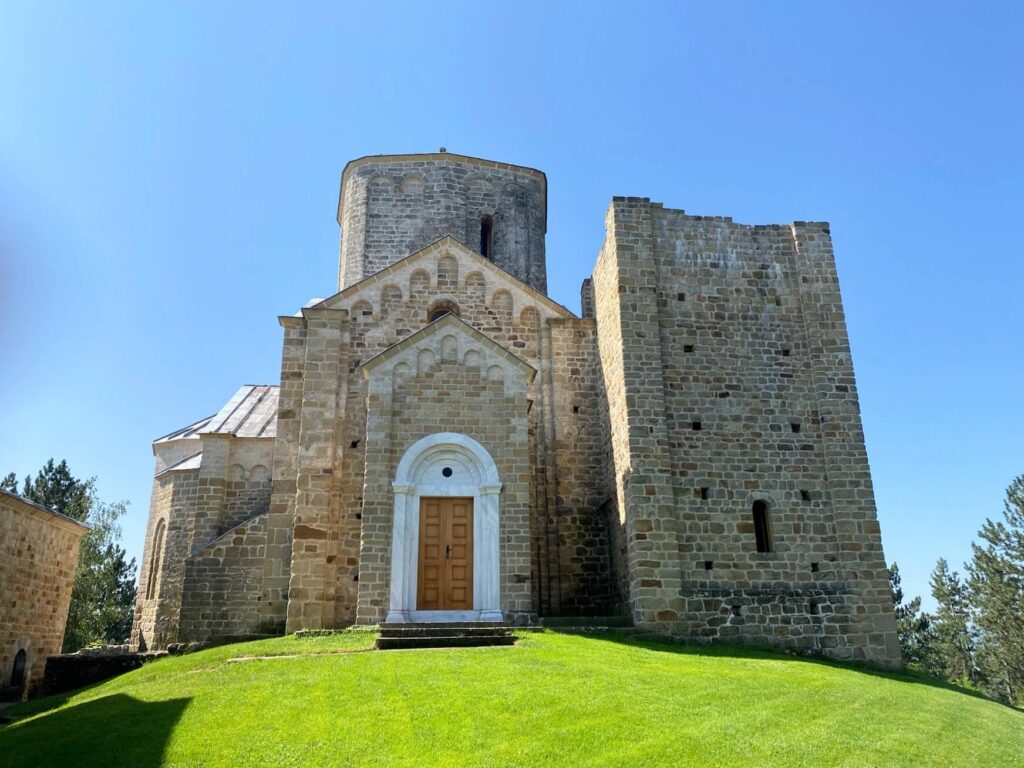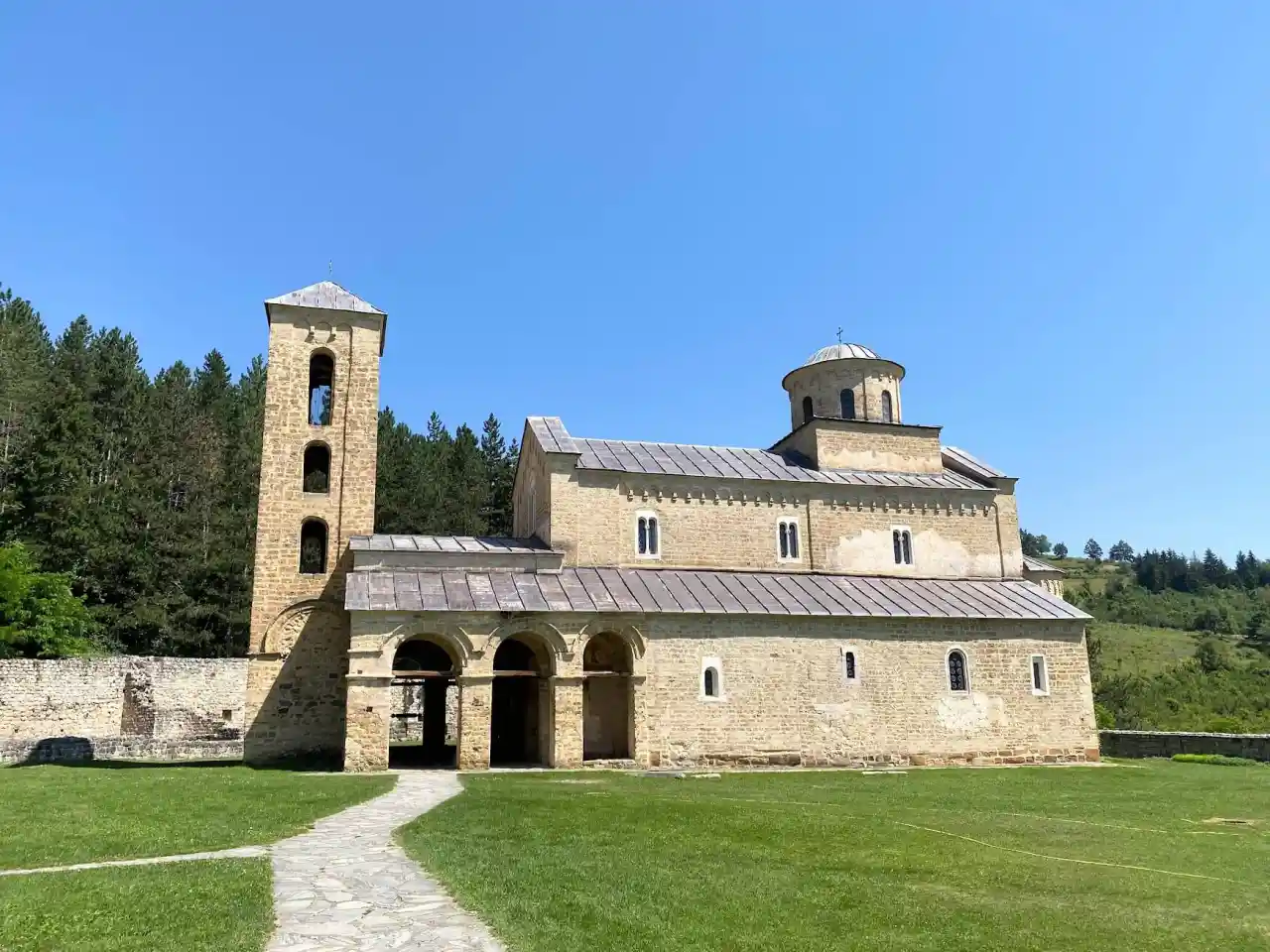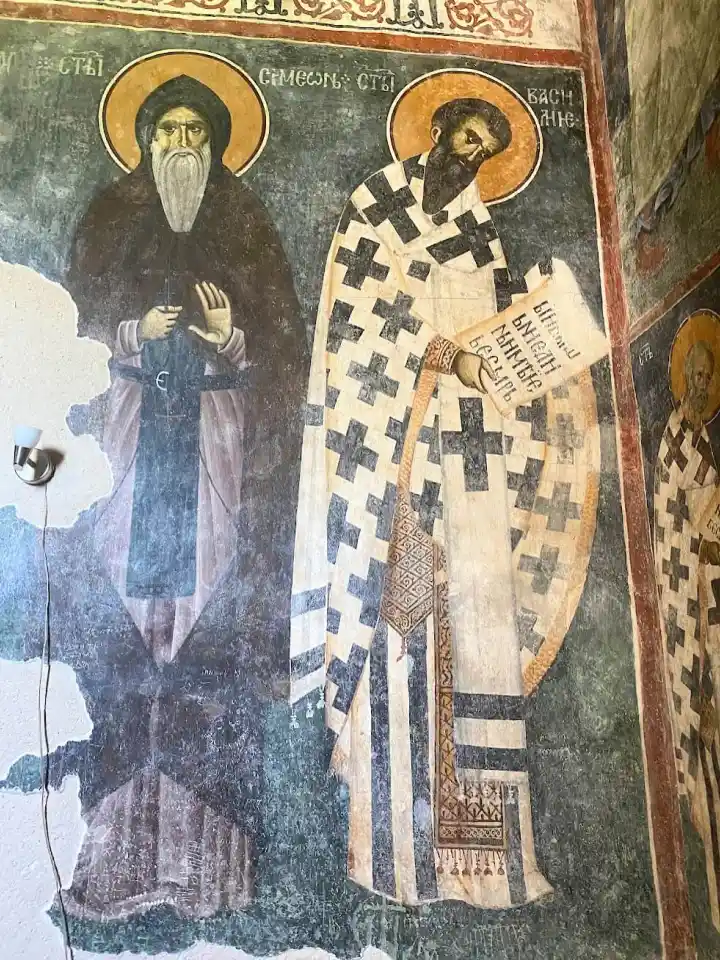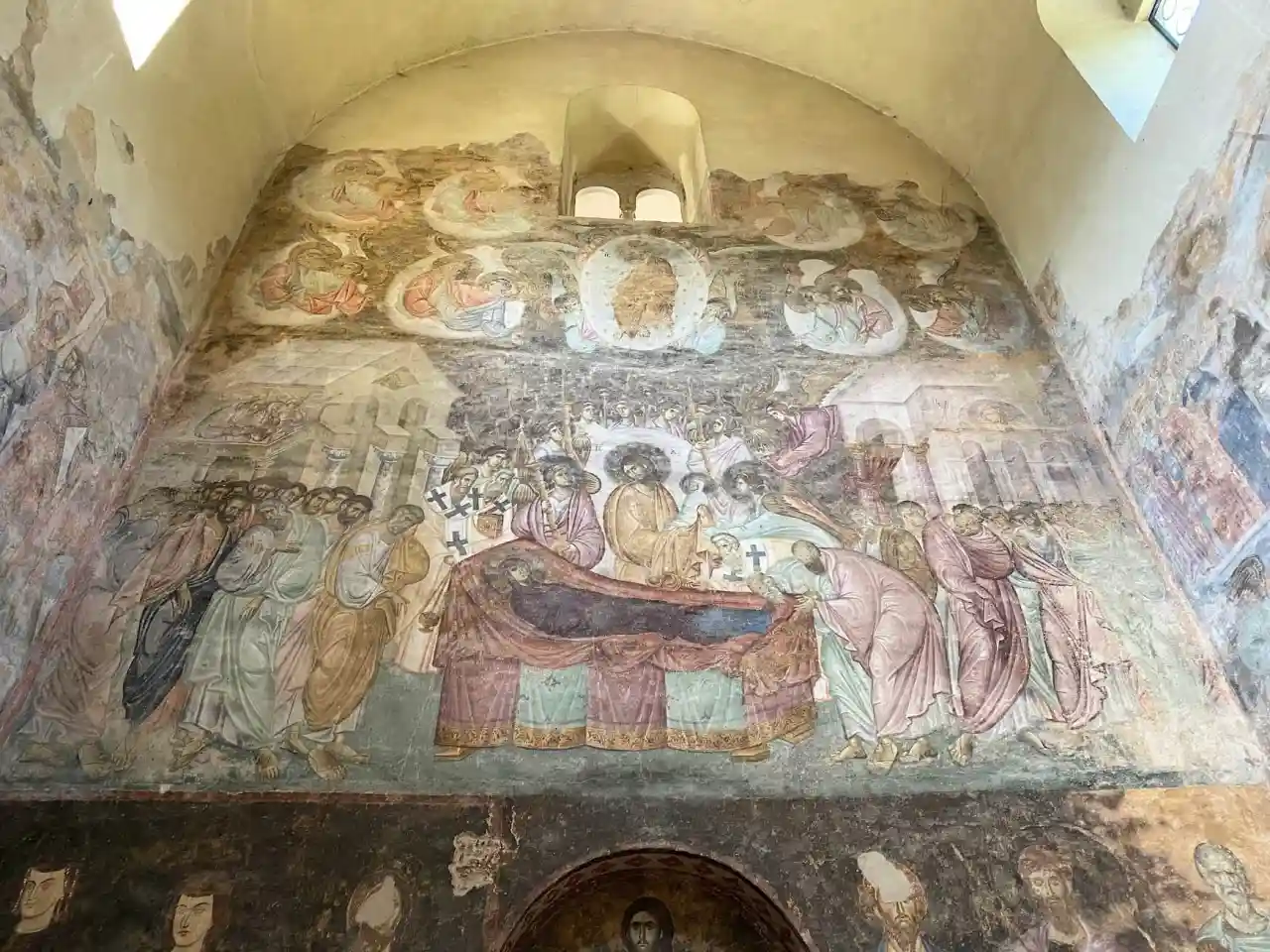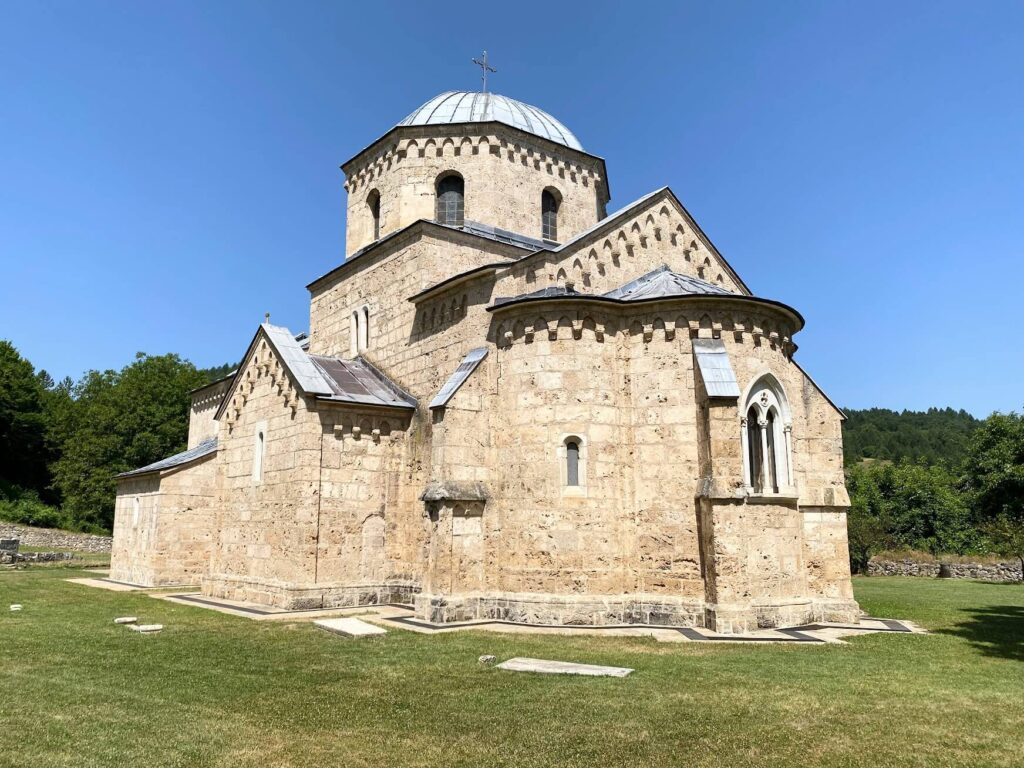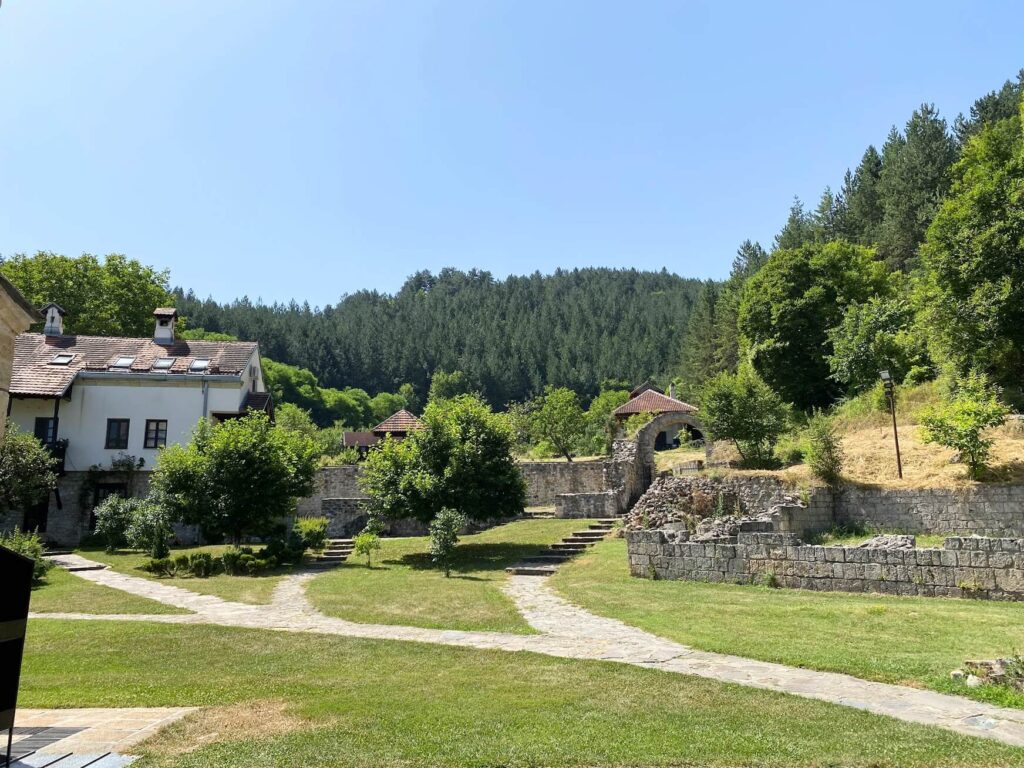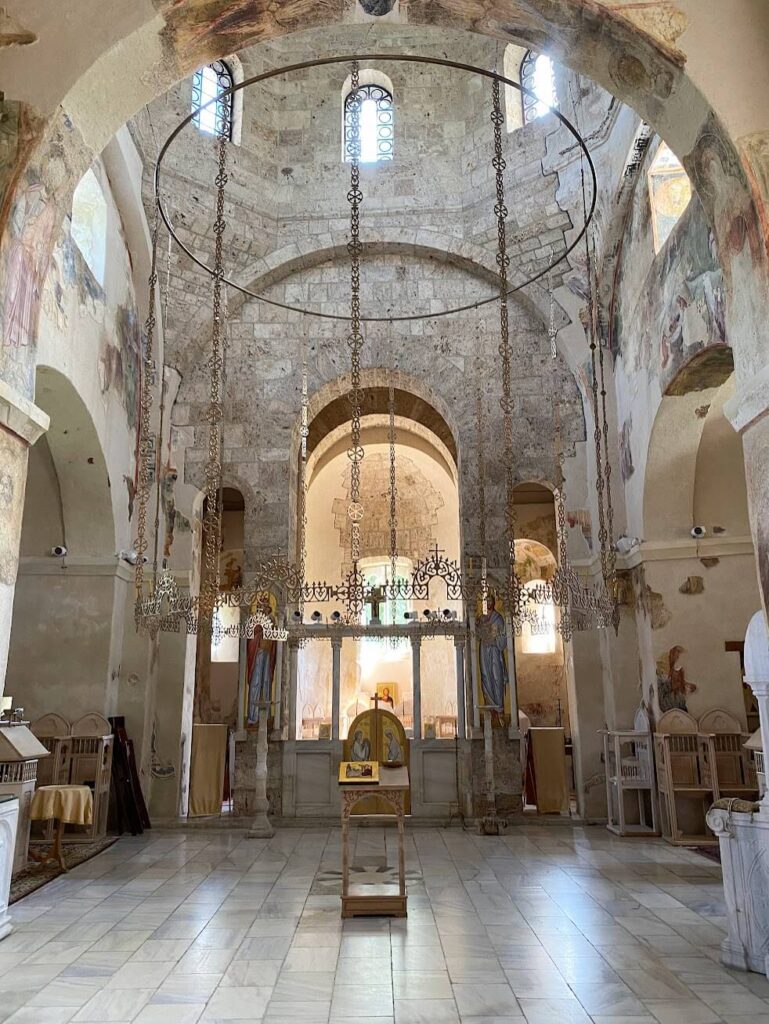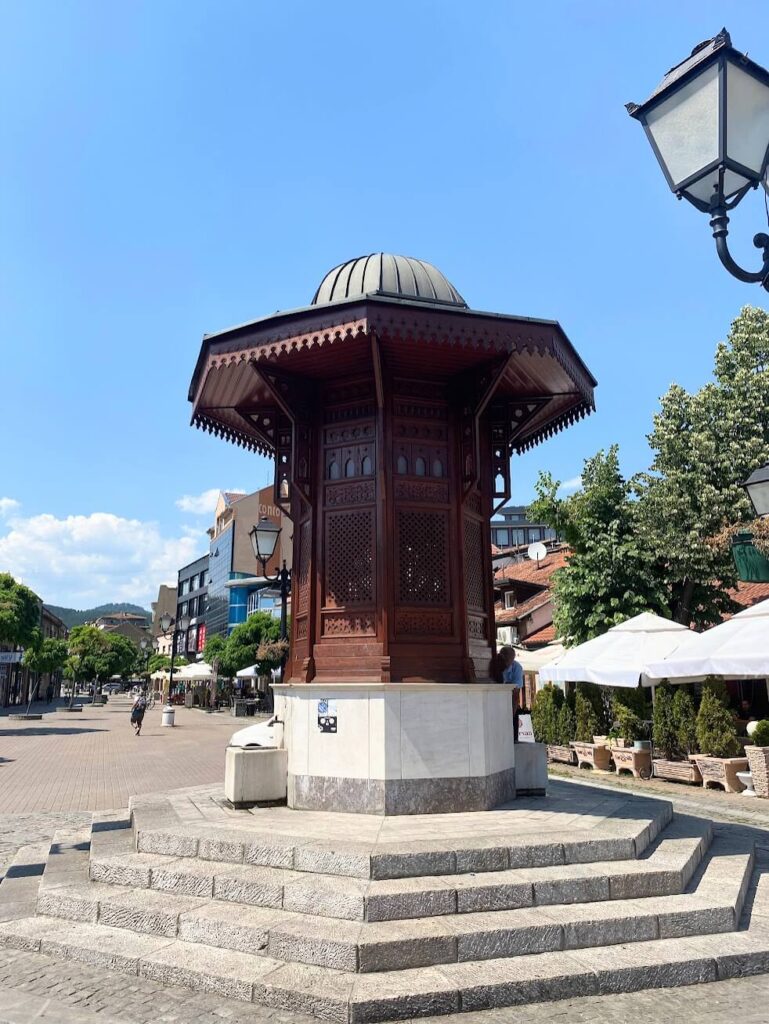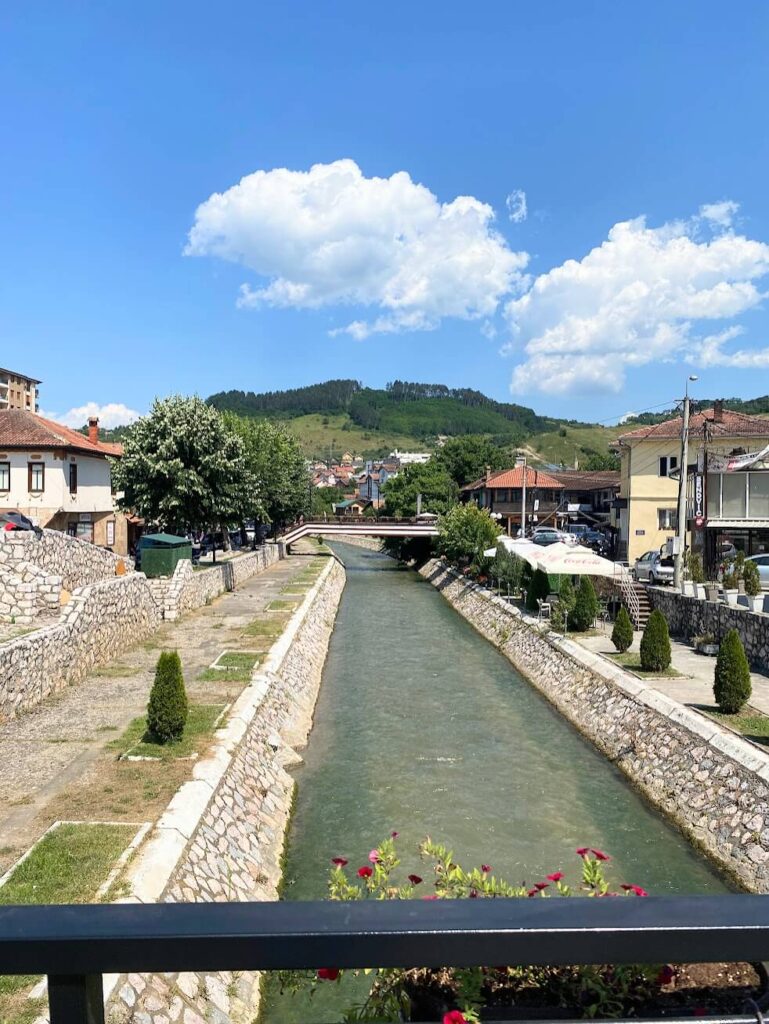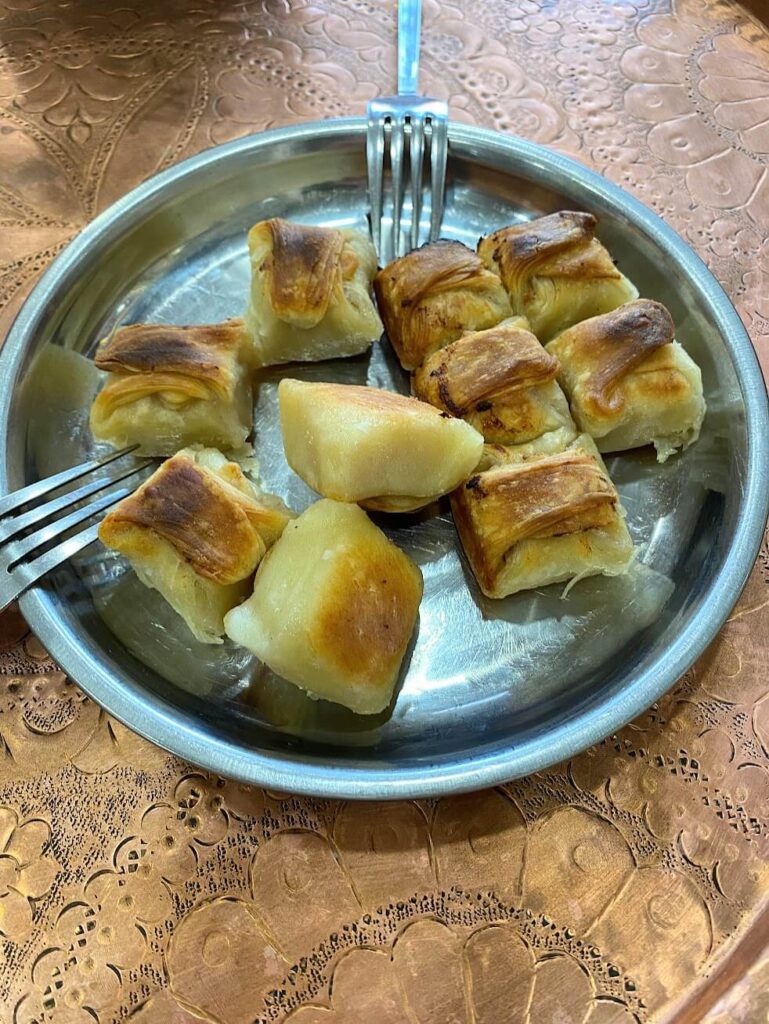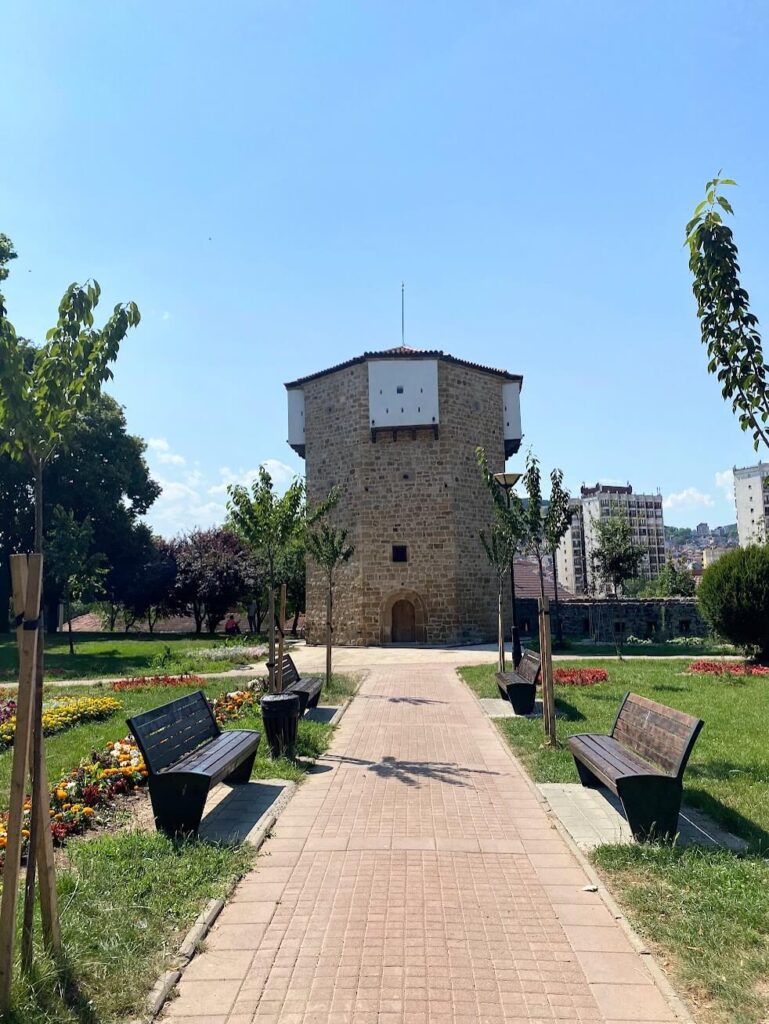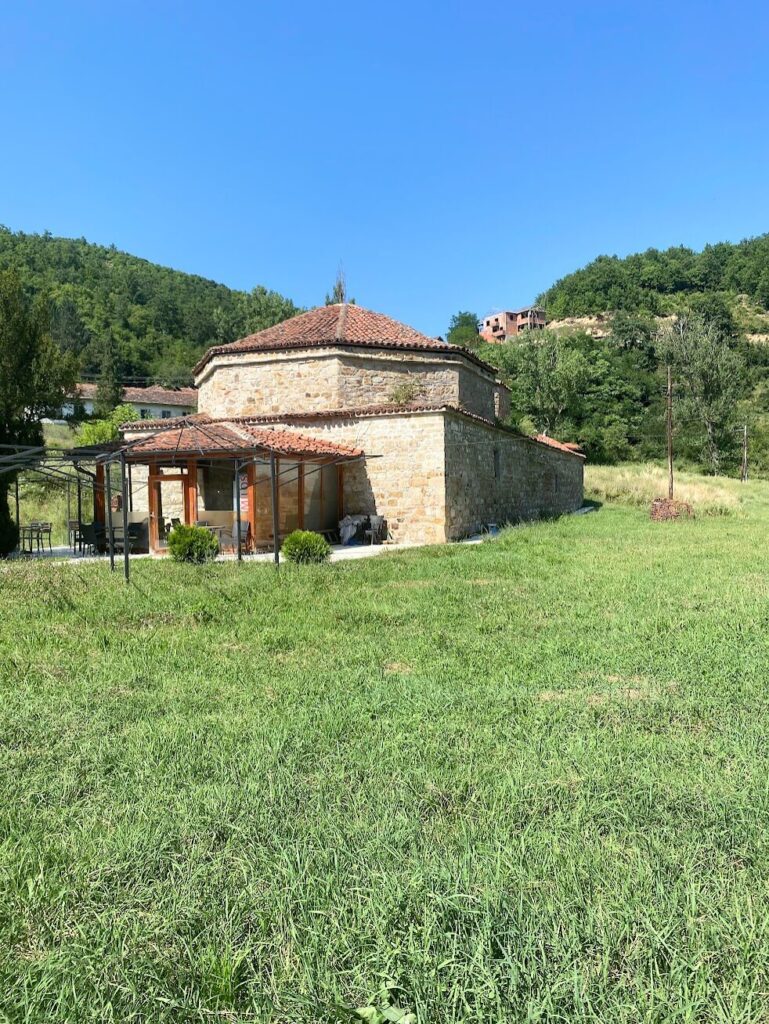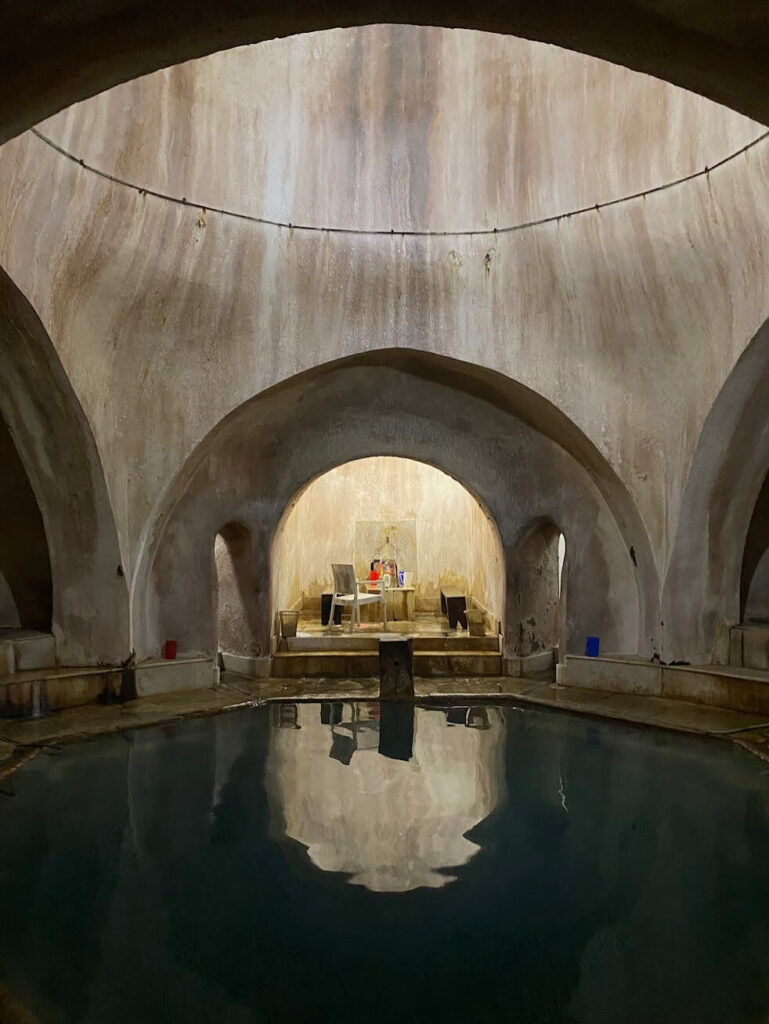As explorers and travellers, we are always looking for hidden gems, destinations that haven’t been discovered yet by the large amount of tourists. It’s hard to find those special places in today’s globalised world. However, last week I spent a few days exploring the medieval monasteries in Serbia. And was thrilled to find some of those authentic places there.
Exploring the medieval monasteries in Serbia
With more than 200 medieval monasteries in Serbia, that country is a fantastic place to visit and learn more about them. Located on the border of East and West, their architecture is often influenced by both, which gives those places a unique appearance. Serbian medieval monasteries were centres of education and places where art and culture flourished. They were tightly linked to the medieval Serbian kingdom, so kings financed those monasteries and thus helped them develop.
⤷ Read more: Exploring the TRANSROMANICA sites in Slovakia
What is TRANSROMANICA?
During the few days I spent there, I explored five Serbian medieval monasteries located on the Cultural Route of the Council of Europe – TRANSROMANICA. That cultural route connects, explores and promotes Romanesque sites in ten European countries. In their work, TRANSROMANICA highlights joined European cultural heritage and encourages people living in these locations and tourists to learn more about the Romanesque heritage in Europe.
⤷ TIP: If you’re not entirely sure what the Romanesque is, here it is: it’s a style in art and architecture happening roughly between the 10th and 13th centuries. It’s a part of medieval art, characterised by semi-circular arches, massive walls, sturdy pillars, large towers and decorative arcading. It’s the first pan-European style since the Roman time.
TRANSROMANICA sites in Serbia
The TRANSROMANICA sites are located in southern Serbia, between Kraljevo and Novi Pazar, in the area known as the ‘Valley of the Kings’. It was my first time in Serbia, so I did my fair share of research before the trip. I flew to Belgrade, a bustling metropolis filled with a combination of lavish historical palaces, Socialist skyscrapers and modern buildings. While wandering through the city centre, it impressed me with its excellent restaurants, hipster cafes and numerous local designer shops.
However, nothing could prepare me for the change in scenery and cultural mix I found in the south of Serbia. From a plane, the north of the country looked like a mosaic made of numerous shades of yellow and green pieces of flat land. However, the more south I went, the scenery became more hilly. Until finally, it changed into mountains.
Medieval monasteries there were built during the 12th and 13th centuries in the area, which was at that time the centre of the Serbian medieval kingdom of Raška. The archaeological remains of its capital, the Old Town Ras, could still be seen, as well. Nemanjić dynasty that ruled it erected several monasteries in the region. They started creating their cultural landscape by placing these buildings on the hilltops.
The five medieval monasteries on the TRANSROMANICA cultural route in Serbia uniquely combine Byzantine and Romanesque architecture. Interiors of the medieval monasteries in Serbia were often painted with vast fresco decorations, which are among the best examples of Byzantine paintings in Europe.
These monasteries are mostly isolated, surrounded by nature, vast forests, and nearby river sources. The natural background of dark green trees and forests makes the light architecture of the monasteries almost shine. That tranquil surrounding gives them a unique spiritual atmosphere that’s turning travellers into pilgrims.
Watch my video about the medieval monasteries on the TRANSROMANICA route in Serbia:
Visiting the TRANSROMANICA sites in Serbia
The Cultural Route of the Council of Europe – TRANSROMANICA connects five medieval monasteries in Serbia. I visited all of them during my trip. It was fascinating to observe all the similarities they have. But also to explore their uniqueness and differences.
⤷ TIP: Check out more photos and videos from my trip exploring the TRANSROMANICA sites in Serbia in Culture Tourist Instagram highlight on this link.
Žiča Monastery
Located on a little elevation on the outskirts of Kraljevo, Žiča was the first medieval monastery I visited in Serbia. The monastery complex was built at the beginning of the 13th century. Its Church of the Savior is significant because it was a coronation church of the seven kings of Serbia. Stefan the First was crowned in Žiča as the first king of Serbia. In 1219 it became the first Seat of the Serbian Archbishoprics when Sava Nemanja (later known as Saint Sava) became the first Serbian Archbishop.
These places aren’t museums but are still functioning monasteries. And that’s something that makes them alive. You can see monks and nuns in them, buy some goods they produce and even spend a night at some of these locations. Žiča is the women’s monastery today.
The majority of these buildings have a similar plan and shape. Since these are the Orthodox monasteries, they were influenced by Byzantine art and architecture. However, western influence is present in its decoration, such as the friezes of blind arcades.
Studenica Monastery
One hour drive away, another beautiful TRANSROMANICA site in Serbia is located – the Studenica Monastery. The walls surrounding it are well preserved, giving a better feeling of how those medieval monasteries in Serbia used to look. Middle Ages was a dangerous time, so fortified monasteries protected the monks and people living in surrounding areas.
The Studenica Monastery complex originally consisted of 14 churches and chapels. Three are preserved today, while you can see archaeological remains of some other edifices. Romanesque style is visible in the Church of the Mother of God’s exterior. At the same time, Byzantine influence is present in the frescoes at its interior.
Saint Sava was an elder abbot in Studenica Monastery at the beginning of the 13th century. It’s when it became the cultural, spiritual and medical centre of medieval Serbia. Studenica Monastery has been on the UNESCO List of World Cultural Heritage since 1986.
⤷ Read more: Studenica Monastery in Serbia
Church of the Holy Apostles Peter and Paul
Although not on the TRANSROMANICA cultural route, the Church of the Holy Apostles Peter and Paul is a place that shouldn’t be missed while in that area. Built in the 9th century on the remains of an older church, that medieval building is the oldest intact church in Serbia. Some of the most notable members of the Nemanjić dynasty were baptised in the church, making it an essential site for Serbian history.
Peter’s Church, as it’s known among the locals, is located on top of the hill from where I enjoyed a fantastic view of the surrounding mountains. Standing there, you feel its position was a sign of power, as well. The old cemetery outside the church gives it a mystical feel, too.
Đurđevi Stupovi Monastery
Built around 1170, Đurđevi Stupovi Monastery was commissioned by Stefan Nemanja, the founder of the Nemanjić dynasty. The story says he dedicated the monastery church to Saint George (Đorđe in Serbian, that’s why the name of the place is Đurđevi Stupovi, meaning the George’s Pillars). He devoted it to that saint to thank him for helping to escape the dungeon where his brothers put him.
The church differs from other Serbian monasteries on the TRANSROMANICA route because it was built on a little hill. The staircase leads to the church entrance, flanked by two towers. Their original appearance still needs to be discovered; hence they have yet to be restored.
Although few frescoes could be seen inside the main church, some beautiful wall paintings are preserved in King Stefan Dragutin’s Chapel.
Sopoćani Monastery
Built in the second half of the 13th century, Sopoćani Monastery soon became the royal family’s burial place. It’s the most different from all other TRANSROMANICA sites I visited in Serbia. It looks like a typical Western basilica from the outside. The Romanesque influence is present in its architectural elements, such as the tower, entrance portal and windows. By closer look, you can see the church was rebuilt a few times, and its additions belong to different periods.
The most impressive in the Church of Trinity at Sopoćani Monastery is its interior with fantastic frescoes. These are some of the most important 13th-century wall paintings in European art. The ‘Dormition of the Mother of God’ has the highest quality among them.
The monastery complex was severely damaged during the wars between the Austrian and Turks. It was almost completely ruined until the beginning of the 20th century, when it was carefully restored. Sopoćani Monastery and the nearby old town Ras have been listed as the UNESCO World Cultural Heritage since 1979.
⤷ Read more: Sopoćani Monastery in Serbia
Gradac Monastery
Gradac was the last monastery I visited in Serbia. Located deep in the forest above the River Gradačka, it has one of the best micro-locations of all the places I visited. Although it’s similar to other medieval monasteries I saw in Serbia, with Gothic elements, its architecture is slightly different.
The monastery was founded in the second half of the 13th century by the French princess Helene d’Anjou, wife of Serbian king Stefan Uroš I. It was also her burial place. The monastery is essential because it was the first girl’s school in medieval Serbia.
Gradac Monastery was a large complex, but Ottomans severely damaged it after 1389. That’s why many of its parts are in the archaeological state. The monastery was completely abandoned during the Ottoman rule. It has been reconstructed since the 1960s, which also brought the nuns back.
Staying in Novi Pazar
I stayed in the town of Novi Pazar while exploring the TRANSROMANICA sites in Serbia. Although that town isn’t on the TRANSROMANICA route, it’s handy to stay there while visiting these medieval monasteries. While wandering around that fascinating town, I was so glad the National Tourism Board of Serbia organised my stay there.
After being the centre of the medieval Serbian kingdom, the area was conquered by the Ottoman Empire. The Turks founded the town of Novi Pazar in the 15th century, soon becoming one of the region’s most important trade centres. Merchants from Istanbul and Dubrovnik came there to sell their goods.
The area of southern Serbia was under Ottoman rule until the 19th century. Its long government left a strong mark on the culture, architecture and lifestyle of the Novi Pazar area today. That cultural influence of the East, combined with majestic Orthodox medieval monasteries, impressed me the most in this area of Serbia. It allows curious travellers to experience the cultural mosaic that still hasn’t been touched with mass tourism. While eating burek and mantije, drinking grilled coffee and listening to the Muslim call to prayer coming from a nearby mosque, you feel you’re in a place filled with history.
My favourite place to discover that unchanged culture was the old hammam. The Isa-beg Hammam is located in the city centre of Novi Pazar. Built in the 15th century, today it’s an abandoned edifice where you can just imagine how it looked like in its heyday. However, outside the city centre, I visited another historical hammam that is over 500 years old and still in use. Seeing it gave me such a fantastic insight into the local culture. And not only because of the tradition of bathing in healing natural sulfur water. But, it is also a social moment of going to hammam for centuries in that area. I met all the women there (men and women have separate time slots for bathing), and after chatting for some time, I learned about their life, joys and struggles. And learned once again, however different we may look on the outside, people are the same in their souls. That’s what travel teaches you. And that’s what I loved the most about it!
⤷ TIP: I stayed at Hotel Vrbak in Novi Pazar, located in the town centre and perfect for exploring the city and the TRANSROMANICA sites.
Tips for visiting medieval monasteries in Serbia
⤷ National Museum in Belgrade – If you’d like to learn more about these places and the medieval history of Serbia, visit the National Museum in Belgrade. Various artefacts and even some frescoes from these monasteries are on display there, giving you an even better insight into the history of these places.
⤷ What to wear in medieval monasteries in Serbia – All the medieval monasteries on the TRANSROMANICA route in Serbia are in use, so you should dress appropriately when visiting them. Short sleeves and anything up to your knees is fine. You don’t need to cover your head when entering the monasteries.
⤷ How to visit these medieval monasteries in Serbia – The TRANSROMANICA sites in Serbia are located in isolated areas, mainly outside the towns. Since public transport isn’t widespread in the region, the only way to visit them is by car. I rented a car at the Belgrade Airport and drove to southern Serbia. A highway goes almost all the way to Kraljevo (and Žiča Monastery). Then I took a curvy mountain road to get to other monasteries. Here is a great guide to driving in Serbia, which is helpful if you plan to visit these medieval monasteries. My tip is to use Google Maps on your phone for navigation. It’s more reliable than the GPS built into a car.
⤷ Paying in Serbia – The official currency in Serbia is the Serbian Dinar. One euro is around 117 dinars, and one US dollar is about 106 dinars. I used the Revolut card to withdraw money at the ATM, pay for tools, and pay at gas stations and restaurants. In smaller cafes and markets, I paid with cash.
Southern Serbia is a region filled with beautiful nature, mountains, forests, fantastic medieval monasteries, great food and some of the most hospitable locals. With its combination of Orthodox Catholicism and Islam coexisting wonderfully, it’s an area of cultural mix that could be an inspiration and model to many others. Still undiscovered by mass tourism, this is the area for cultural travellers to visit and explore. Following the TRANSROMANICA route in Serbia will take you to some past times and beautiful places you didn’t know existed.
I visited TRANSROMANICA sites in Serbia during the press trip organised by them and their partners from the Serbia Tourist Board. Many thanks to them for organising this trip for me. As always, all opinions are my own.


